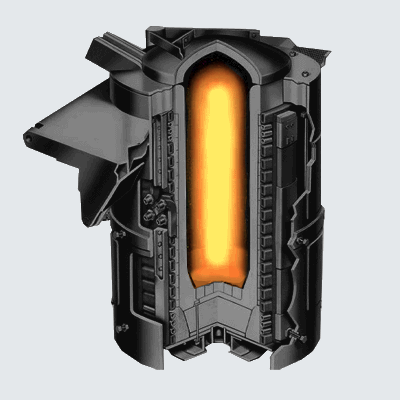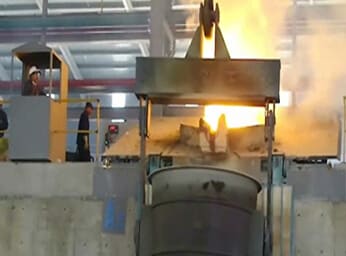Unveiling the Power of Induction Furnaces: Transforming the Metals Industry

In the realm of modern metallurgy, the induction furnace stands as a remarkable technological marvel, revolutionizing the way we process and melt metals. Introduced in the late 19th century, this innovative furnace has since become a cornerstone of the metals industry, enabling efficient and sustainable metal casting and melting processes. This blog post delves into the workings of induction furnaces, their applications, advantages, and their crucial role in shaping our industrial landscape.
What is an Induction Furnace?

An induction furnace is an electrical furnace that utilizes electromagnetic induction to heat and melt metal. Unlike traditional methods that rely on direct heat, such as fuel or electric resistance, induction furnaces generate heat directly within the metal itself through electromagnetic induction. The process involves passing an alternating current (AC) through a copper coil, creating a rapidly changing magnetic field. When the metal to be melted is placed within the coil, the magnetic field induces electrical currents known as eddy currents within the metal, resulting in intense heat generation.
Applications of Induction Furnaces
- Melting and Casting: One of the primary applications of induction furnaces lies in the melting and casting of metals. Whether it’s steel, iron, copper, aluminum, or other alloys, induction furnaces can efficiently and precisely melt large quantities of metal in a controlled environment. This capability is vital in the production of various metal products like pipes, rods, billets, and castings.
- Foundries and Forging: Induction furnaces play a crucial role in foundries and forging industries. They provide the necessary heat for shaping and molding metal into specific components and structures, ensuring consistency and quality in the final products.
- Heat Treatment: Induction furnaces are employed in heat treatment processes, such as annealing, tempering, and hardening of metal components. These processes improve the mechanical properties of metals, making them more durable and resilient.
- Recycling: With environmental concerns becoming more prominent, induction furnaces are being utilized in metal recycling facilities. They efficiently melt scrap metal, allowing for the reprocessing of old materials and reducing the demand for raw resources.
Advantages of Induction Furnaces
- Energy Efficiency: Induction furnaces boast impressive energy efficiency compared to traditional furnaces. Since the heat is generated directly within the metal, there is minimal energy wastage, resulting in significant cost savings and reduced carbon emissions.
- Precise and Consistent Melting: The ability to control the heating process precisely ensures uniform and consistent melting, leading to high-quality metal products with fewer defects.
- Clean and Safe: Induction furnaces produce less harmful emissions than other heating methods, making them a greener and safer choice for the environment and workers alike.
- Fast Melting Times: The rapid heating capabilities of induction furnaces allow for shorter melting times, leading to increased productivity and reduced downtime.
Conclusion
In conclusion, induction furnaces have emerged as a transformative force in the metals industry. Their ability to efficiently melt and cast metals, perform heat treatment, and aid in recycling processes has significantly impacted manufacturing, foundries, and forging industries. With their energy efficiency, precision, and environmental benefits, induction furnaces are likely to remain a cornerstone of metal processing for years to come. As technology continues to advance, we can expect even more innovations in induction furnace design, further enhancing their capabilities and solidifying their role as a cornerstone of modern metallurgy.






